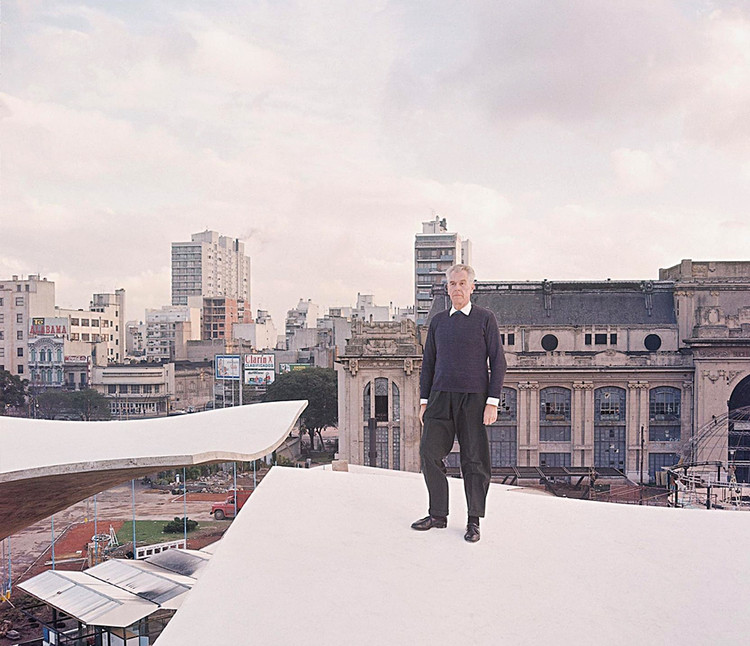
The umbrella column or hollow vault (bóveda cáscara) is a reinforced concrete structure designed by Amancio Williams (Buenos Aires, 1913-1989) that, thanks to its form, has the capacity to support massive amounts of weight while independently maintaining its balance. In other words, it doesn't need any reinforcing structure, save for its singular column, to remain standing.
The studies surrounding bóveda cáscara in architecture were started by Williams in 1939, and resulted in numerous essays and small-scale models. The structures, specifically designed for high roofs and also known as 'umbrellas' or 'parasols,' are a prime example of the modern architectural movement in Argentina, distinguished by their experimentation in form and function.

This structure has become an architectural element in its own right, in many cases working independently from its original purpose. In many cases, umbrella columns were developed as a roof support system that also acted as a second layer of protection from the sun and rain. The high roof creates a shaded, cool area while the column serves as a storm drain.
The modular form of the structure increases its flexibility as well as its ability to be applied to multiple projects such as schools, houses, hospitals, churches, and industrial buildings to name a few.
To illustrate the wide range of uses for umbrella columns, we have compiled a list of projects—7 that have yet to be built, 1 temporary, and 2 built after Amancio Williams' death—that showcase its qualities as an element of architectural design:
Three Hospitals in Corrientes (1948)
- Status: Not built
- Category: Healthcare
.jpg?1597855379)
.jpg?1597856570)
Avellaneda Service Station (1954)
- Status: Not built
- Category: Industry
.jpg?1597856042)
.jpg?1597856522)
Olavarría Industrial School (1960)
- Status: Not built
- Category: Education
.jpg?1597856029)
.jpg?1597856510)
Bernal Textile Supermarket (1960)
- Status: Not built
- Category: Industry
.jpg?1597856292)
.jpg?1597856559)
House in Punta del Este (1961)
- Status: Not built
- Category: Residential
.jpg?1597855792)
.jpg?1597856482)
Palermo Exhibition Pavilion (1966)
- Status: Temporary structure
- Category: Cultural
.jpg?1597856160)
.jpg?1597856533)
Sanctuary of Our Lady of Fátima in Pilar (1967)
- Status: Not built
- Category: Facilities


House in the Hills of San Isidro (1969)
- Status: Not built
- Category: Residential


The following two projects were built after Amancio Williams' death in accordance with his original design and layout.
Monument to the End of the Millennium, A Homage to Amancio Williams (2000)
- Status: Completed
- Category: Cultural
- Architect: Claudio Vekstein

The Mill, Cultural Factory (2010)
- Status: Built
- Program: Cultural
- Architects: Mario Corea. Francisco Quijano, Silvana Codina, Luis Lleonart

Photographs are courtesy of Archivo Williams and its director, Claudio Williams.
For more information, visit the Amancio Williams official website.


.jpg?1597856160)
.jpg?1597856292)
.jpg?1597855792)
.jpg?1597856029)

.jpg?1597856160)
.jpg?1597856292)
.jpg?1597855792)
.jpg?1597856029)



.jpg?1597856559)
.jpg?1597856522)
.jpg?1597856482)
.jpg?1597855379)

.jpg?1597856042)
.jpg?1597856570)
.jpg?1597856533)
.jpg?1597856510)



